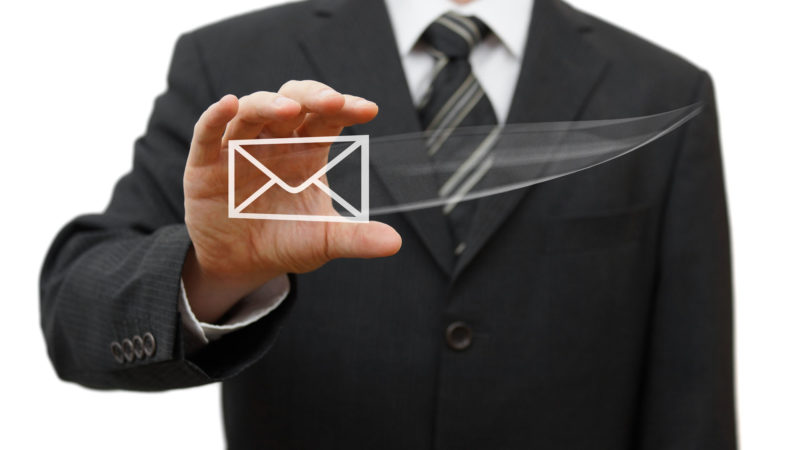What you can learn from a bad email
There's good that can come from carefully examining email mistakes. Columnist Ryan Phelan shows you what went wrong in a recent email and how to fix it.

That was three years ago, though. I’m a full-time Texan now. So, you can imagine my surprise to open my inbox one day and see an email from PG&E, the California power company.
When I saw the sender name, I felt confused, surprised, alarmed and concerned. Was this a long-delayed demand for an overlooked payment? Trust me, marketers — you don’t want your subscribers experiencing any of those feelings, especially not all at once.
Here’s what I found when I opened the email:
Where the email went wrong
This email is a textbook example of what happens when you think your email message looks clear and sensible, but your end users end up confused.
Lack of accurate customer data
I’m not a PG&E customer anymore. So, why is my email address still a live file? Apparently, nobody suppressed my email from promotional messages when I closed my account. That oversight is easy to fix.
Marketers, go through your data to make sure the people you have listed are still customers. In PG&E’s case, the utility was sending an email message to someone (and I’m sure I’m not the only one) who has not been a customer for three years. That’s more than enough time to get the database updated.
This is a crucial step to get right for any business, but especially for retailers and other ecommerce companies. Are you sure your customers really ordered the products you say they did? This is a critical data point to verify if you do targeted or dynamic emails. You must be sure your order data is accurate down to the customer level.
This data update and verification should be an established part of your messaging process. If you don’t have a checkmark next to it every time, you, too, could be alarming or annoying your customers with inaccurate and out-of-date messaging.
The design (or lack thereof)
Consumers are smart enough about email today to recognize badly designed emails. My company learned in a 2016 consumer study that two-thirds or more of them will trash an email if it looks bad on mobile.
Given all the money I paid PG&E over the years, I assume the company has a marketing department savvy enough about email to create a representative brand message that includes a logo and other devices, all of which reassure me that the email is from this sender and not a scammer.
Instead, this message looks sketchy at first glance. And that first glance is crucial, because email readers will give your message only a few seconds, tops, to judge its value, assuming they even open it. From the foreign-language characters at the top to the text-based content, this whole email looks deceptive.
Given that I wasn’t expecting to receive a PG&E email now that I pay a different utility to keep the lights on, I was already on hyper-alert, and the lack of branding did not help.
Marketers, how do you make sure your emails represent your brand and encourage readers to have confidence in them?
No unsubscribe link
This email does not have an unsubscribe link anywhere in it, an omission that violates CAN-SPAM, the set of federal laws and regulations that govern commercial emails in the United States.
It would be a stretch to call this a transactional email, which does not require an unsubscribe link, because I’m not a customer any longer. The lack of personalization (no account details, my old home address and so on) reinforces my view that this is a broadcast promotional message telling me how good PG&E has been for the environment.
Further, the fine print at the bottom of the email says it was sent “by a third party for PG&E on behalf of the California Public Utility Commission.” Huh? Did PG&E sell my email address to a third party without telling me? The sender name is “Pacific Gas and Electric Company,” which doesn’t square with the third-party declaration.
No-reply sender address
The last sin this email commits is the sender email address. It’s my least favorite kind: the “no-reply.” It creates a negative impression at the most crucial moment: the inbox view when your subscribers are deciding whether to open — and trust — your emails.
Also, “no-reply” doesn’t relieve you from the duty of checking the mailbox associated with your sender address for the comments and unsubscribes that customers will, inevitably, send you even though you told them not to. (See “Should marketing emails use a ‘no-reply’ email address?”)
Wrapping up
As the holiday season approaches, email volume will go up tenfold or more for most of us in the retail sector. This email experience is a good wake-up call for us to remember, as we start executing on our holiday plans, to look things over and consider how emails appear to our subscribers and customers.
I’m not picking on PG&E, because I’m sure the intent was not to deceive. However, the email does have some flagrant violations of best practices for data use, design and customer service that must be called out and fixed.
Review your own email campaigns for some of the problems I pointed out here. While I applaud PG&E for being kind to the planet and having green policies, the company needs to get the fundamentals right first.
Opinions expressed in this article are those of the guest author and not necessarily MarTech. Staff authors are listed here.
Related stories
